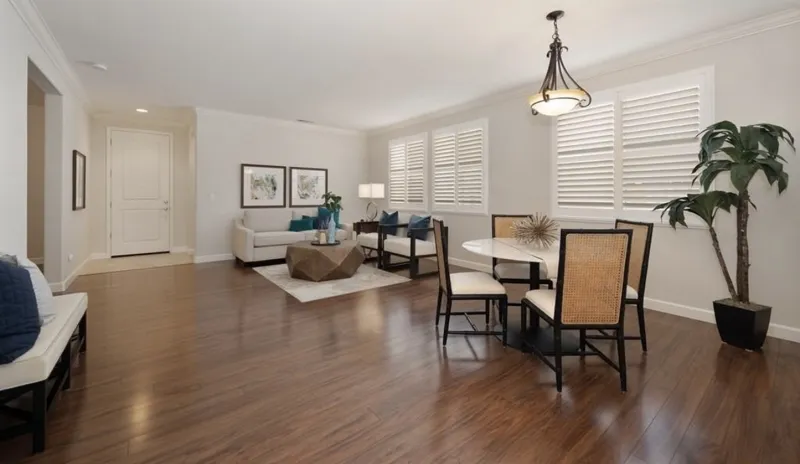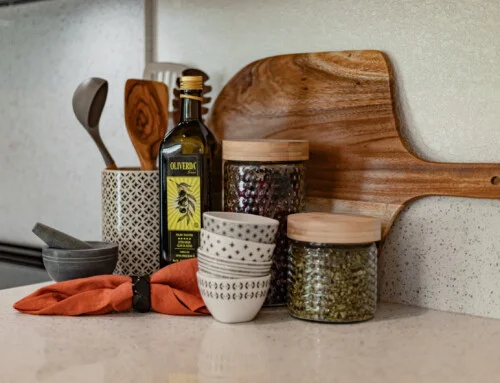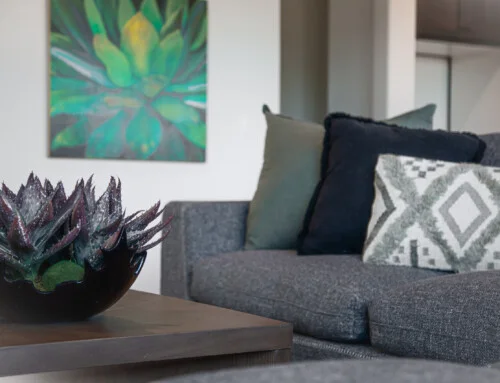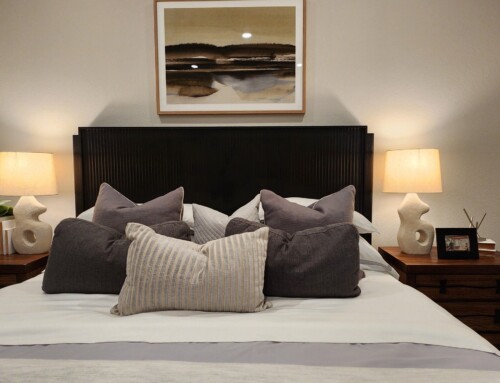Staging a home to sell isn’t just about placing furniture and throwing up some décor. It’s a strategic process designed to highlight a home’s best features and make it appealing to potential buyers. Whether you’re working with a professional home staging company or doing it yourself, there are several key considerations that will help make your home stand out in the market.
In this blog, we’ll cover the most important considerations when staging a home, from decluttering to enhancing curb appeal, and why these factors are essential for a successful sale.
1. Declutter and Depersonalize
One of the first steps in staging a home is decluttering. Buyers want to see the home itself, not your personal belongings. Clutter can distract from the home’s features and make it feel smaller and less inviting. Here’s how to approach decluttering:
- Remove Excess Items: Clear off countertops, remove excess furniture, and store personal items like family photos and memorabilia. The goal is to create a clean, open space that allows buyers to imagine their own belongings in the home.
- Organize Closets and Storage Spaces: Buyers are often curious about storage, so make sure closets and cabinets are tidy and organized. If these spaces are overflowing, it may give the impression that the home lacks adequate storage.
2. Focus on Curb Appeal
First impressions are everything in real estate, and the exterior of your home is the first thing buyers will see. Enhancing curb appeal is one of the most important considerations when staging a home. Here’s how to improve your home’s exterior:
- Clean and Maintain: Power wash the driveway, sidewalks, and siding. Clean windows, trim bushes, mow the lawn, and add fresh mulch to flower beds.
- Add Welcoming Touches: A fresh coat of paint on the front door, a new doormat, and potted plants can make the entrance feel welcoming and inviting.
- Outdoor Lighting: Make sure your home is well-lit in the evening. Exterior lighting adds warmth and ensures the home looks attractive at all times of day.
3. Maximize Natural Light
Buyers love bright, airy spaces, so maximizing natural light is a key element of staging. Dark rooms can feel smaller and less inviting, while well-lit rooms create an open and cheerful atmosphere. Here are some ways to enhance natural light:
- Open Curtains and Blinds: Keep window treatments open during showings to let in as much light as possible. If you have heavy or dark curtains, consider replacing them with lighter, sheer fabrics.
- Clean Windows: Sparkling clean windows allow more light to enter and give the home a polished appearance.
- Use Mirrors: Placing mirrors in strategic locations can help reflect natural light and make rooms feel brighter and more spacious.
4. Create a Flow
Staging isn’t just about making individual rooms look good; it’s also about creating a flow throughout the home. Buyers should be able to move easily from room to room, and the layout should make sense. Here’s how to create flow in your home:
- Furniture Placement: Arrange furniture in a way that promotes easy movement. Avoid blocking doorways or walkways, and keep the layout open and inviting.
- Cohesive Décor: Use a consistent color palette and style throughout the home to create a sense of cohesion. Each room should feel connected, contributing to the overall flow of the space.
- Remove Obstructions: Ensure that buyers can easily navigate the home without bumping into furniture or décor. Clear paths and open spaces encourage exploration.
5. Neutralize the Décor
When staging a home, it’s important to create a space that appeals to a wide range of buyers. Neutralizing the décor helps make the home feel more universally appealing. Here’s how to achieve this:
- Use Neutral Colors: Opt for neutral paint colors like beige, gray, or soft white. These colors create a clean backdrop that allows buyers to envision their own style in the space.
- Minimize Bold Décor: While you want the home to feel inviting, avoid bold or overly personal décor that could turn off buyers. Stick to simple, classic designs that won’t distract from the home’s features.
- Keep it Minimal: Less is often more when it comes to staging. Keep décor simple and understated to allow the home itself to shine.
6. Highlight Key Features
Every home has unique features that make it stand out, and part of staging is making sure these features are highlighted. Whether it’s a fireplace, a large window, or a spacious kitchen, make sure these focal points are emphasized:
- Draw Attention to Focal Points: Arrange furniture and décor to highlight the home’s best features. For example, position furniture to frame a fireplace or use décor to draw attention to large windows with beautiful views.
- Use Lighting: Proper lighting can enhance focal points. Use floor lamps, table lamps, or sconces to highlight specific areas of the home and create a warm ambiance.
7. Maintain Cleanliness
A clean home is a must when staging for sale. Buyers will notice even small details like dust or fingerprints, so make sure your home is spotless before showings. This includes:
- Deep Cleaning: Clean floors, carpets, windows, and surfaces. Pay special attention to kitchens and bathrooms, as these areas can have a big impact on buyers.
- Fresh Smells: Ensure the home smells fresh and clean. Avoid using strong fragrances or air fresheners, as some buyers may be sensitive to scents. Instead, opt for natural, subtle scents or simply open windows for fresh air.
Staging a home is all about creating an inviting, neutral space that appeals to the widest possible range of buyers. By focusing on decluttering, enhancing natural light, creating flow, and highlighting key features, you can make your home stand out in the market.
At Heather’s Houses, we understand the importance of thoughtful, strategic staging. Our team is here to help you transform your home and make it irresistible to buyers. Schedule a consultation with Heather’s Houses today to learn how we can help stage your home for a successful sale.







